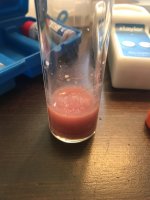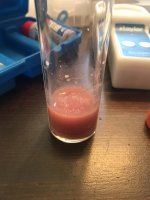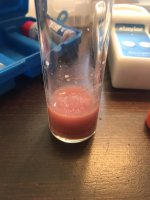So based on pool store test I should be around 1200PPM, which is typical after I open my pool after the winter.
I’m struggling to use the K-1766, in following the directions of the kit and I fill to the 10nl mark, I add my one drop of R-0630 to turn the sample yellow and I’m adding the R-0718 until it is supposed to turn to a milky salmon brick red according to the instructions, when I use the speed stir I end up having a reading of 2000PPM before it turns to the color in the attached, and when I swirl by hand I sometimes achieve the same thing with only 8 drops, and sometimes even more.
I can’t figure out what I’m doing wrong to make this so inaccurate.
I’m struggling to use the K-1766, in following the directions of the kit and I fill to the 10nl mark, I add my one drop of R-0630 to turn the sample yellow and I’m adding the R-0718 until it is supposed to turn to a milky salmon brick red according to the instructions, when I use the speed stir I end up having a reading of 2000PPM before it turns to the color in the attached, and when I swirl by hand I sometimes achieve the same thing with only 8 drops, and sometimes even more.
I can’t figure out what I’m doing wrong to make this so inaccurate.




